AWS re:Invent 2023 is nearing the end. This year’s Keynote by Dr. Werner Vogels as usual, did not disappoint, you’ll see why in a minute but real quick before we get into it: If you are looking for lots of exciting new announcements this isn’t the one to watch.
After a, now traditional, “The Matrix” introduction and overall theme, Werner went into the topic of cost management and he went deep! I highly recommend this keynote to those old-school IT professionals with software development or data center management experience. You’re in for a treat!
Alright, let’s get into the details:




At this point I didn’t know the entire presentation was going to be centered around cost-management in the cloud but I was intrigued by the book “The Frugal Architect” that he kept referring to, which is a book about designing applications that use resources efficiently to save computing power, memory and in turn: operational expenses. A quick Amazon search revealed: such a book does not exist. More on that later.
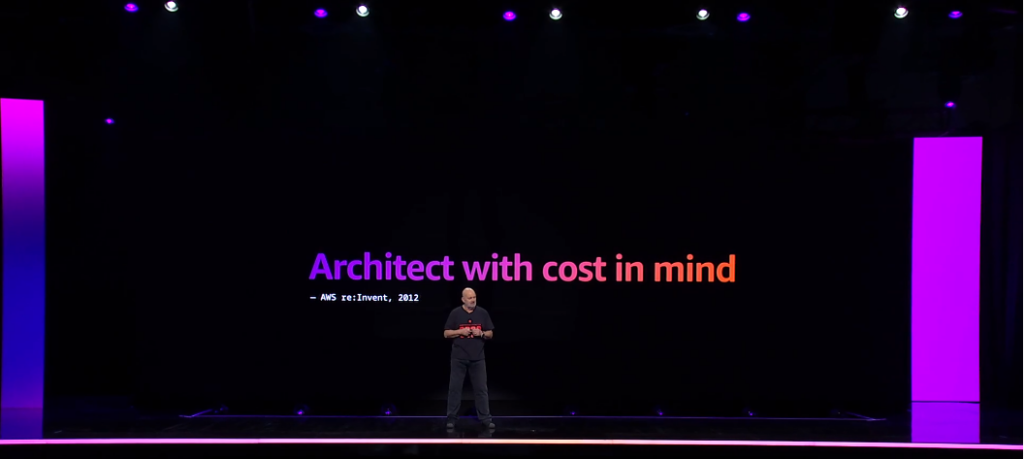

Once it was clear that his entire presentation was going to be around this topic, it all started falling into place. He started to hit specific points and then expanded on those. Here’s a taste.
Align cost to Business
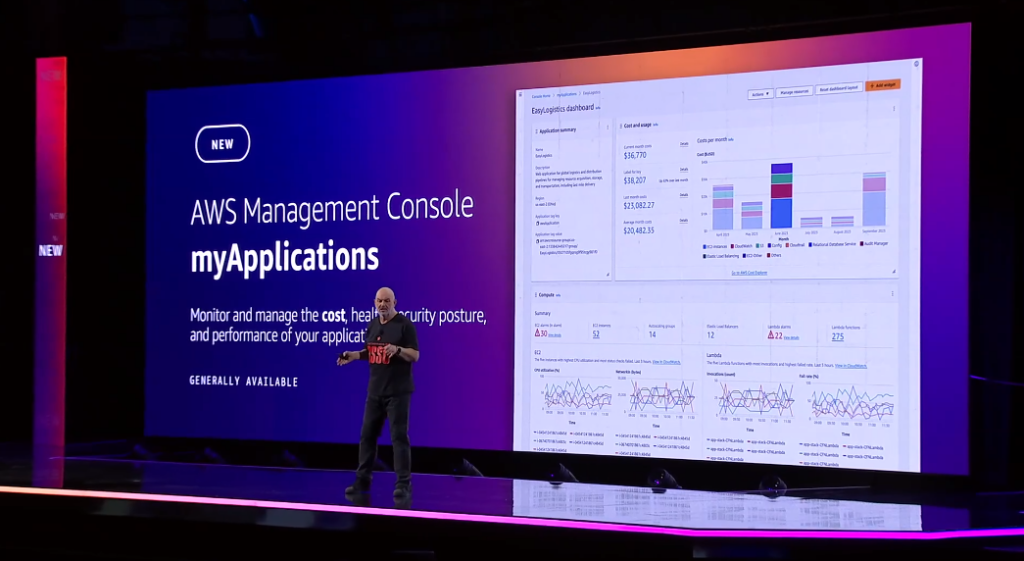

I really loved this point. In the AWS world, we can get super excited about features: high-availability, auto scaling and serverless.
But we should never forget that if our company’s profit depends on low-cost computing, then perhaps we shouldn’t be under utilizing a super-expensive 4xlarge EC2 instance if we could be doing the same job with a group of smaller, spot instances.
This may not be evident at first, but as the business grows you really don’t want surprises in terms of expenses that directly affect the company’s revenue.
This is something that I already do , due to my Software Development background: Keep costs in mind and by ‘costs’, I mean everything: CPU cycles, storage, number of servers, and so on.
I agree with Werner that Amazon Web Services is an amazing service for all your computing needs, just don’t let that monthly bill run away from you by accepting defaults or wasting resources.
Observability
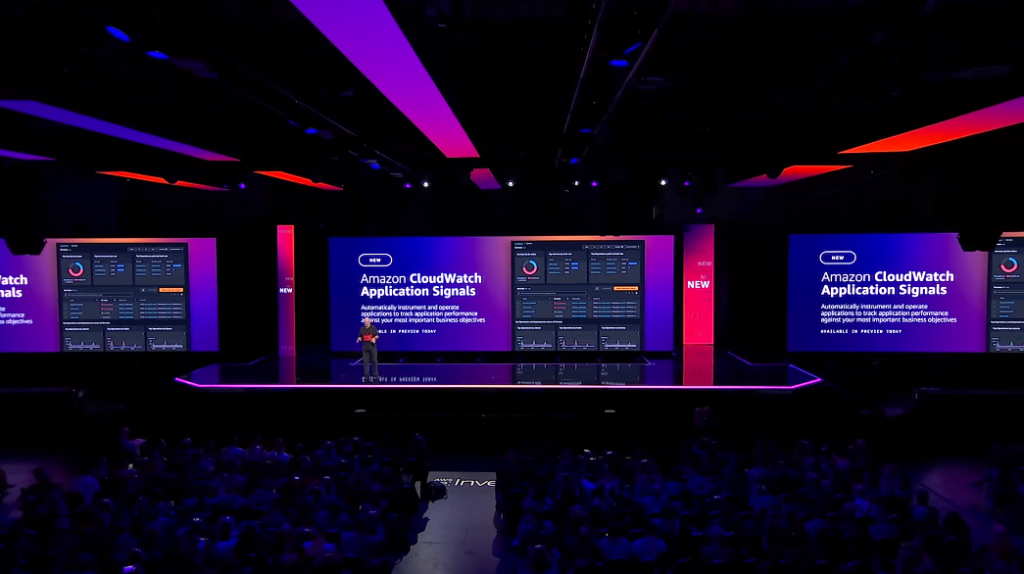

One of his points was that an application that isn’t tracked and measured will incur in hidden or unexpected costs and this point was a nice segway to introduce CloudWatch Applications signals, a new feature to track application-specific cost and usage.
Languages
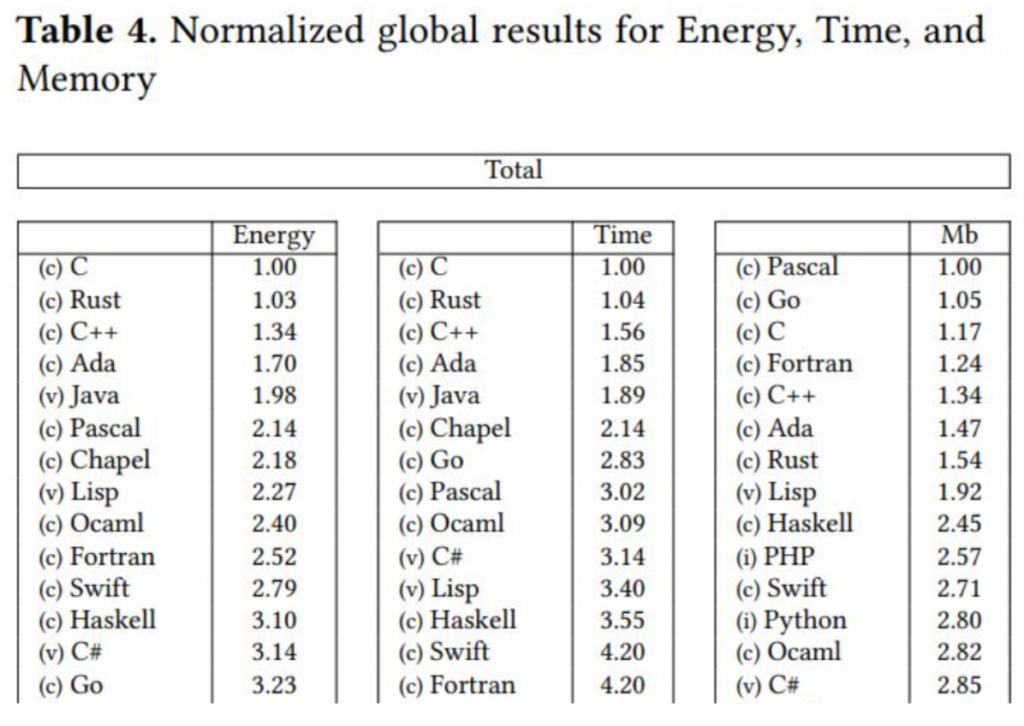

At one point, he was very specific about programming languages and their overall footprint and impact in the speed of our code. Faster, more efficient languages lead to better code that can get the job done faster. He went as far as saying we should be coding in Rust. This is due to its efficiency and speed. I could argue against this:
Granted, Python, Java and .NET Languages are quite heavy due to their underlying support platform — making them pointless for short, transactional programs. But, he failed to account for Development Costs, long-term maintenance and Time-to-Market. Finding Python and Java developers is quite simple as these are popular languages all over the world. Finding Rust developers? not so sure about this one.
Of course, if we shift our focus back to his point: Operational cost.
A program in Rust, C or C++ that can run in a 100 milliseconds will always outperform the same program written in Python, Java or C# simply because of the super-long load time of the environment itself. So, he is 100% correct in terms of cost savings and sustainability.
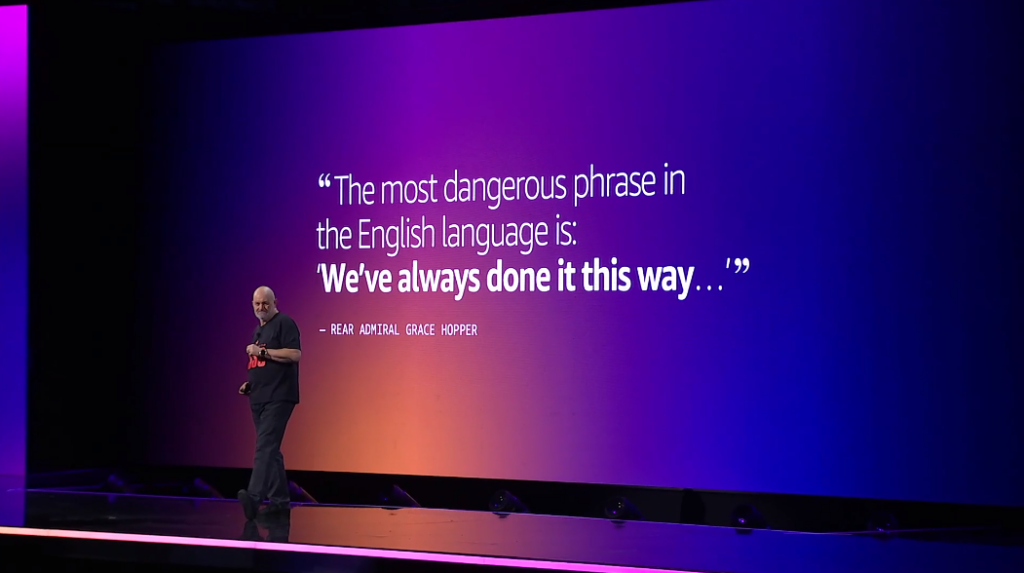

He also touched on the phrase “but, we’ve always done things this way…”, trying to say that we shouldn’t be afraid of a new programming language or technology to get the job done in a much more efficient and sustainable way. While I agree with this, not all businesses can afford to transform their Senior Python developers into Junior Rust developers while expecting the same level of output from them, so, your mileage may vary!
Gen AI
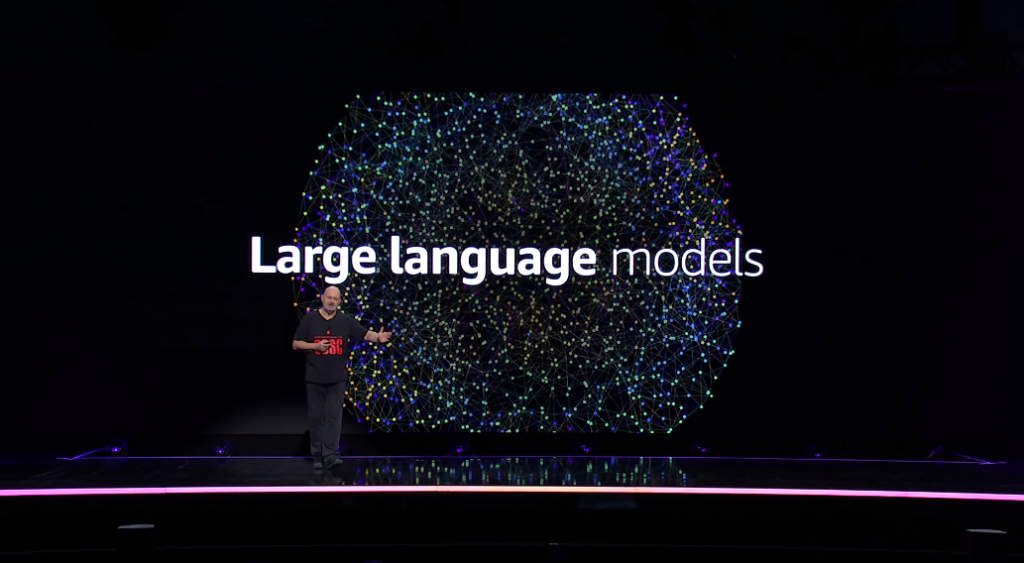

When we got to this part of the conversation, I thought “Oh boy, here we go!” and I was expecting the conversation to tangent wildly into language models, image generation, Amazon Q and so on, but no! It was the complete opposite of what I had in mind.
Instead, he showed us use-cases of traditional AI (Machine Learning, SageMaker, Vision) to solve real-world problems, such as interpreting radiology scans, correctly identifying grains of rice for germination and analyzing image data to find and help victims of child abuse.
By the way, about that software that checks those x-rays images, Dr Vogels has a background in the health industry before making the move to technology, so, he wrote the initial code himself using Python before it was delegated. This code is now open source and much more feature-rich.
Even in this part of the conversation he stayed traditional as opposed to jumping in the bandwagon of Generative AI. I love it!
Although, not gonna lie: I am a huge advocate of using the Cloud Development Kit and he happened to mention that there are new constructs available, specific to GenAI to help us quickly deploy these solutions for our own, custom needs.
AI predicts, humans decide
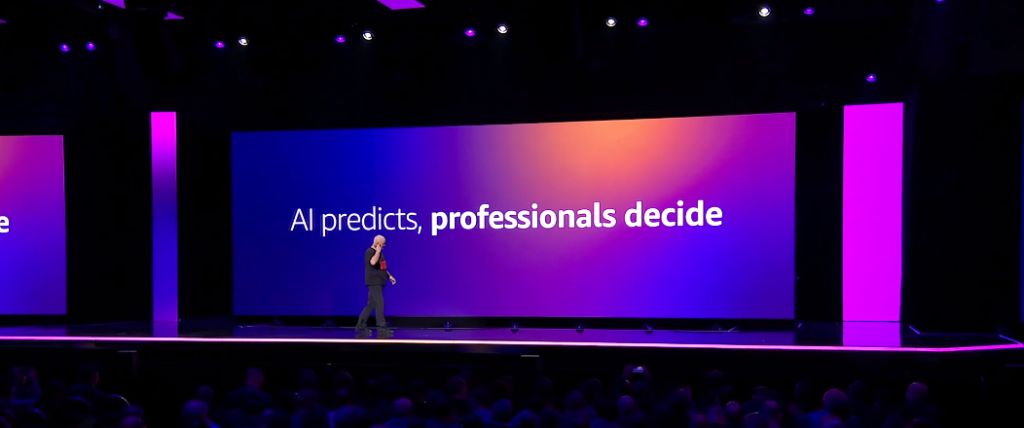

He also emphasized that “AI Predicts, but ultimately humans make the decisions”, implying that machines aren’t going to take our jobs, replace our doctors or grow food for us, but they can certainly assist us to help keep up with an ever-growing population.
As part of his closing argument, he recommends reading his short ebook, The Frugal Architect to help us remember the main points of his conversation.
To wrap this up: It was great! It was certainly geared at old-timers from the very start. In fact, in the first minute he looked at a screen and said “is that a PERL script?”, I couldn’t help but laugh out loud at this one.
Even after the close it was still hilarious: “Hey Werner, Can I scan my container builds for vulnerabilities in my CI/CD pipeline?” “You can now!” — nice way to sneak in one more new feature which I will certainly look into right away, since I am a DevOps guy.


Now, go build something!
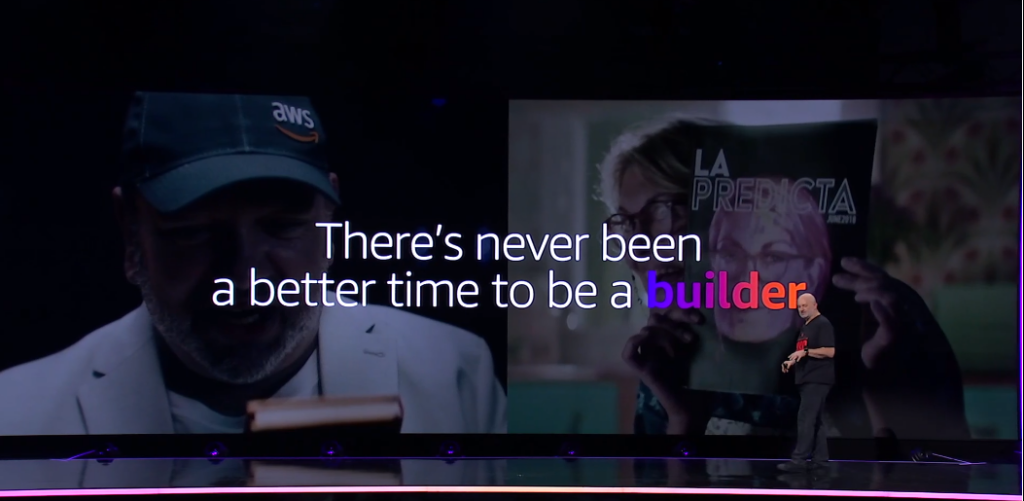

Useful resources from this presentation


In the end he casually dropped this ebook that he wrote, which summarizes the same bullet points that he hit during the presentation. this information is great regardless of cloud computing or not. So, even if you’re not in the cloud yet, you should check it out.
By the way, it is a really short read, so, I highly recommend you take a few minutes of your time and go check it out right now!
CDK
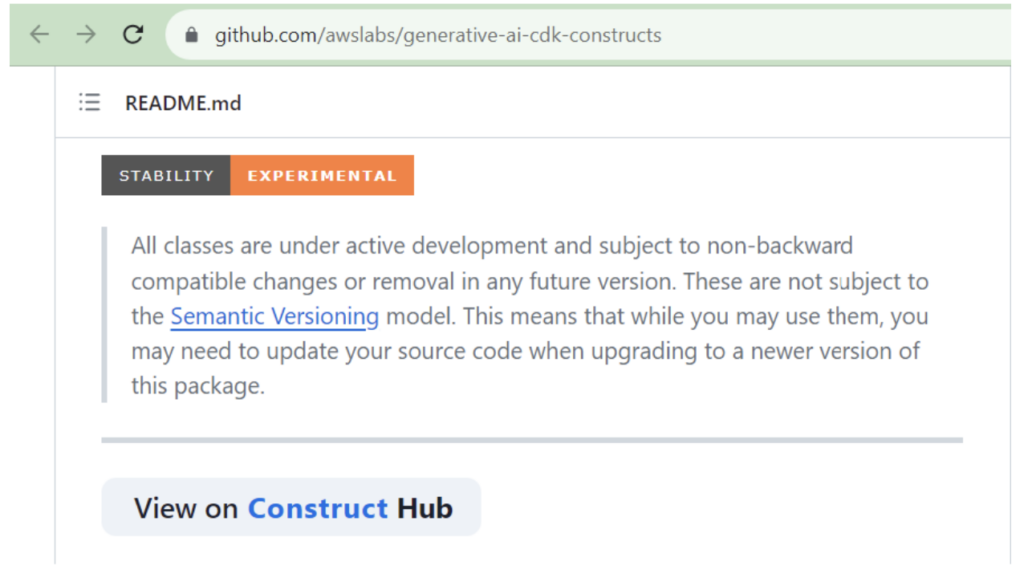

This is the new set of constructs that I mentioned, if you are in need of deploying custom, generative AI solutions in a hurry, you should seriously take a look at this: https://github.com/awslabs/generative-ai-cdk-constructs



